Common blue birds often come in the form of passerines that like to visit backyards. Do you have a songbird perched outside of your window? Or do you need help attracting a specific bird to your feeder? Check out all the types of blue birds in Pennsylvania and discover where they live, what they eat, how they sound, and how to identify them.
Eastern Bluebird
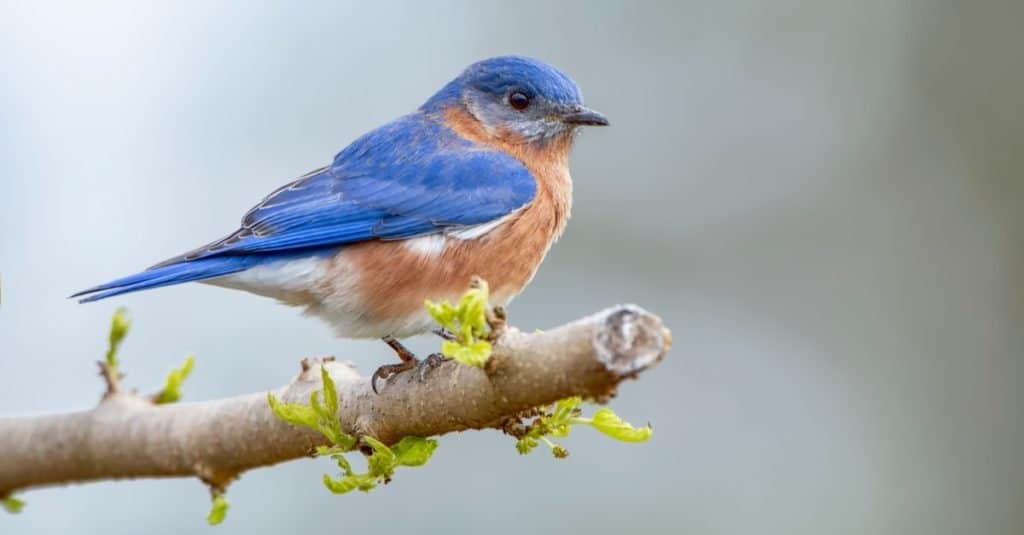
©Bonnie Taylor Barry/Shutterstock.com
Habitat: Eastern bluebirds are widespread, living year-round in the far eastern parts of Pennsylvania and breeding throughout the rest of the state. They live in open country like farms, clearings, roadsides, and pine woods.
Appearance: They are small and plump with round heads, large eyes, and short tails. Males have bright blue heads, backs, wings, rusty brown undersides, and throats.
Diet: Insects, berries, lizards, and tree frogs
Calls: Musical “turalee” and “chit” calls
Backyard Tip: Provide a nest box and mealworms
Blue Jay
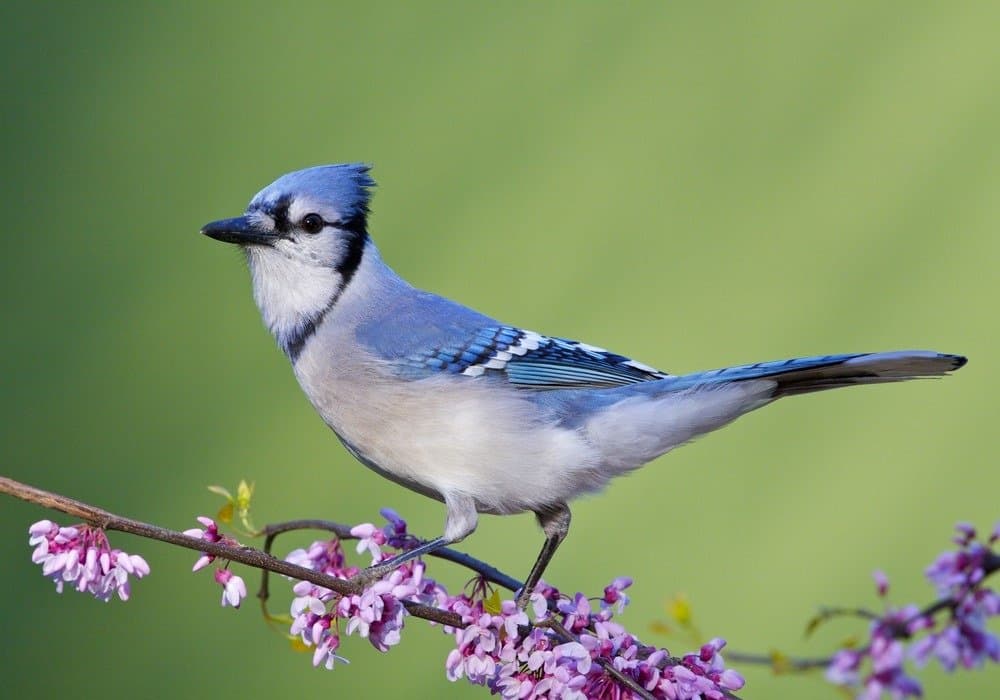
©Tom Reichner/Shutterstock.com
Habitat: Blue jays live in oak and pine woods, suburbs, towns, groves, and local gardens. They live year-round throughout Pennsylvania and the eastern half of the United States.
Appearance: These large songbirds have crests and broad tails. Blue jays are various shades of blue from deep to sky above mixed with black and white. They are grayish below.
Diet: Acorns, nuts, seeds, grains, insects, rodents, frogs, baby birds, and carrion
Calls: Harsh cries and nasal notes
Backyard Tip: Provide sunflower seeds, suet, and peanuts in a tray feeder
Belted Kingfisher
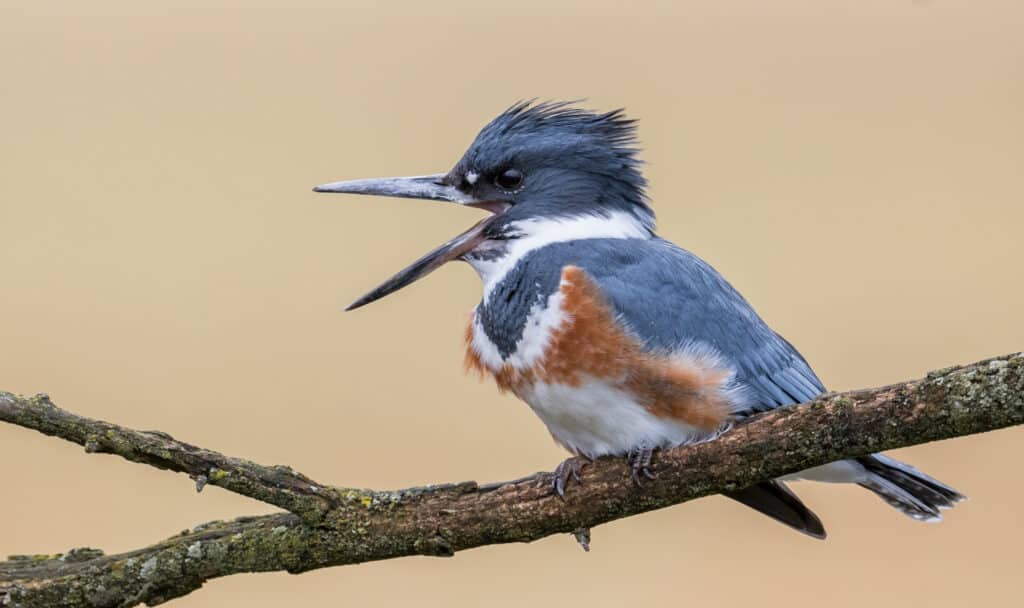
©Harry Collins Photography/Shutterstock.com
Habitat: Belted kingfishers live year-round throughout Pennsylvania and most of the United States. These birds are associated with many water habitats, such as streams, lakes, bays, and coasts.
Appearance: stocky and large-headed, the belted kingfisher has a shaggy crest, short legs, and a straight bill. They have bluish-gray plumage on their heads and backs with white on their undersides and around their necks.
Diet: Small fish, aquatic insects, frogs, small mammals, lizards, and young birds
Calls: Loud rattles and scream calls
Backyard Tip: They don’t typically visit feeders but may stop by a pond or pool.
Barn Swallow

©CezaryKorkosz/Shutterstock.com
Habitat: This familiar rural bird spends its springs and summers throughout the United States, including Pennsylvania. Look for them in semi-open lands, like farms, fields, marshes, and towns.
Appearance: These cone-shaped birds have flat heads, broad shoulders, and pointed wings. They have deep steely blue backs, wings, and tails with cinnamon-colored underparts.
Diet: Insects, spiders, snails, seeds, and berries
Calls: Constant twittering and chattering
Backyard Tip: Place ground-up eggshells on a platform feeder
Black-throated Blue Warbler
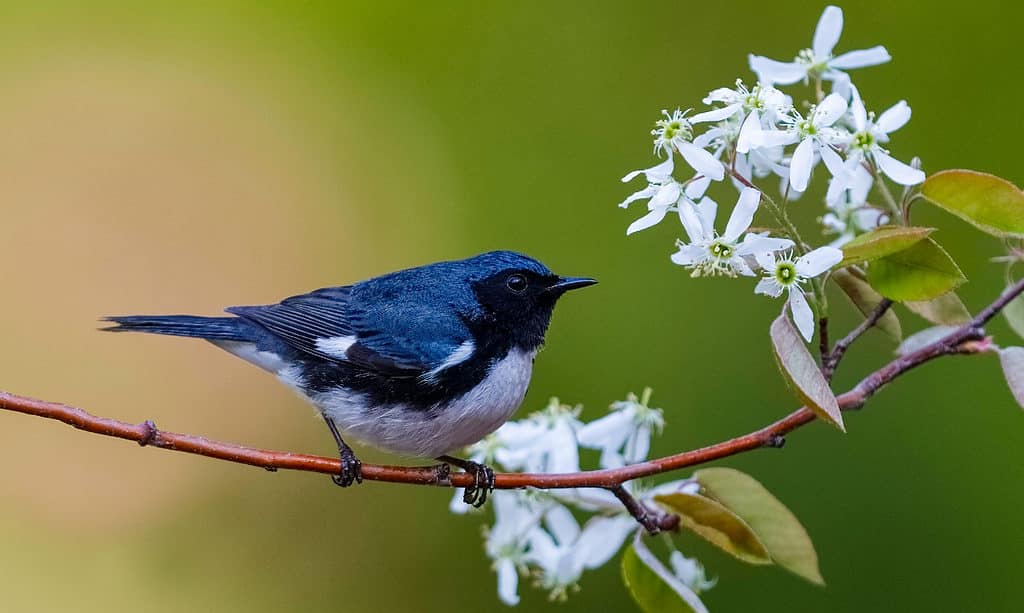
©iStock.com/BrianLasenby
Habitat: They live in the interior of mixed forests and breed in dense undergrowth. You can find them in much of the state during spring and summer, with some populations only passing through during migration.
Appearance: These small, compact birds have pointed bills and plump bodies. They are dark blue above and white below with black faces and throats.
Diet: Insects, seeds, small fruits, berries, and flower nectar
Calls: Husky “zwee” songs
Backyard Tip: This species does not typically come to backyards.
Indigo Bunting
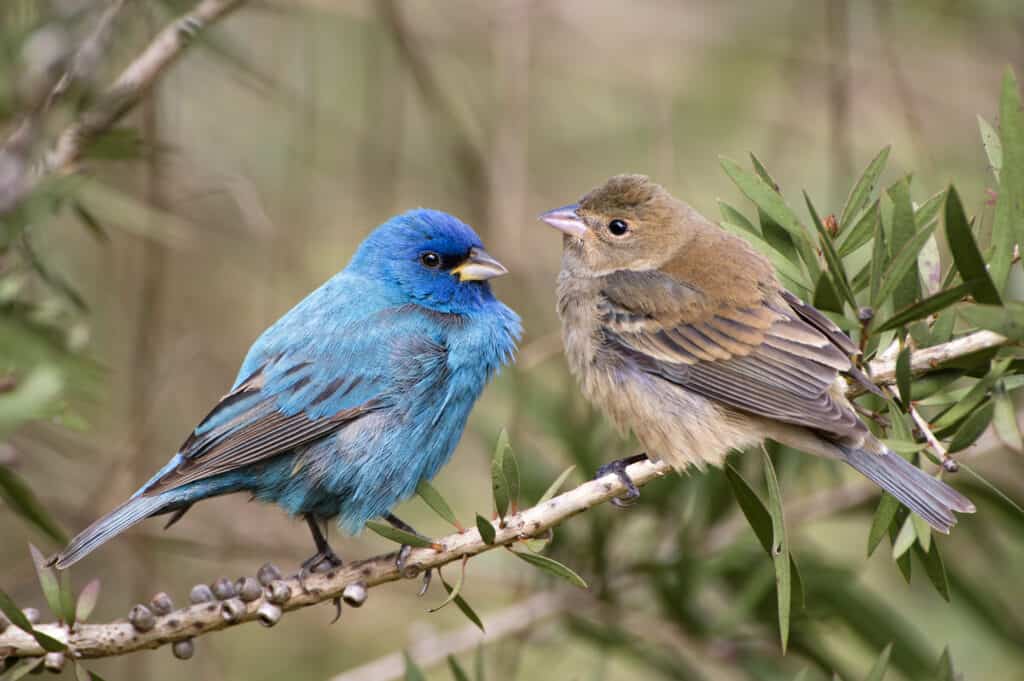
©Bonnie Taylor Barry/Shutterstock.com
Habitat: The indigo bunting breeds in the eastern half of the United States, including Pennsylvania. It inhabits brushy areas in pastures, wood edges, and roadsides.
Appearance: Stocky and small, the indigo bunting has a short, thick bill and rounded wings. They are a vibrant blue color all over, with a darker head and a silver beak.
Diet: Seeds, insects, spiders, and berries
Calls: Rapid warbles and “zeep” calls
Backyard Tip: Provide thistle, nyjer, and live mealworms
Blue-gray Gnatcatcher
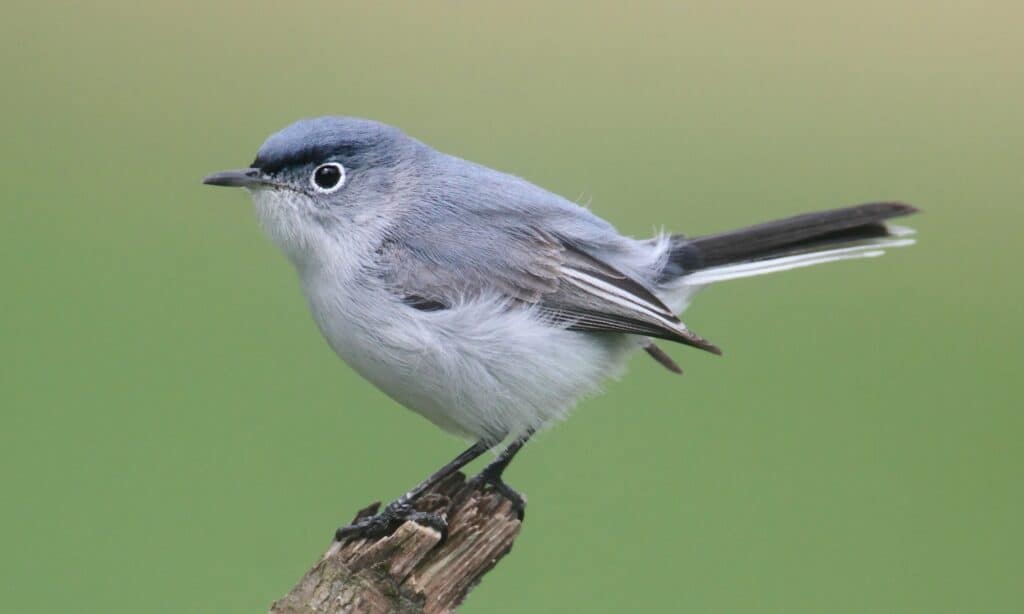
©iStock.com/SteveByland
Habitat: The blue-gray gnatcatcher is another summer bird you can find throughout Pennsylvania during the breeding season. They live in open woods, thickets, and deciduous forests.
Appearance: These tiny birds have long legs, long tails, and thin bills. They have light bluish-gray upper parts, white underparts, and black tails.
Diet: Insects and spiders
Calls: Thin warbles and whining calls
Backyard Tip: These birds do not typically visit backyards.
Purple Martin
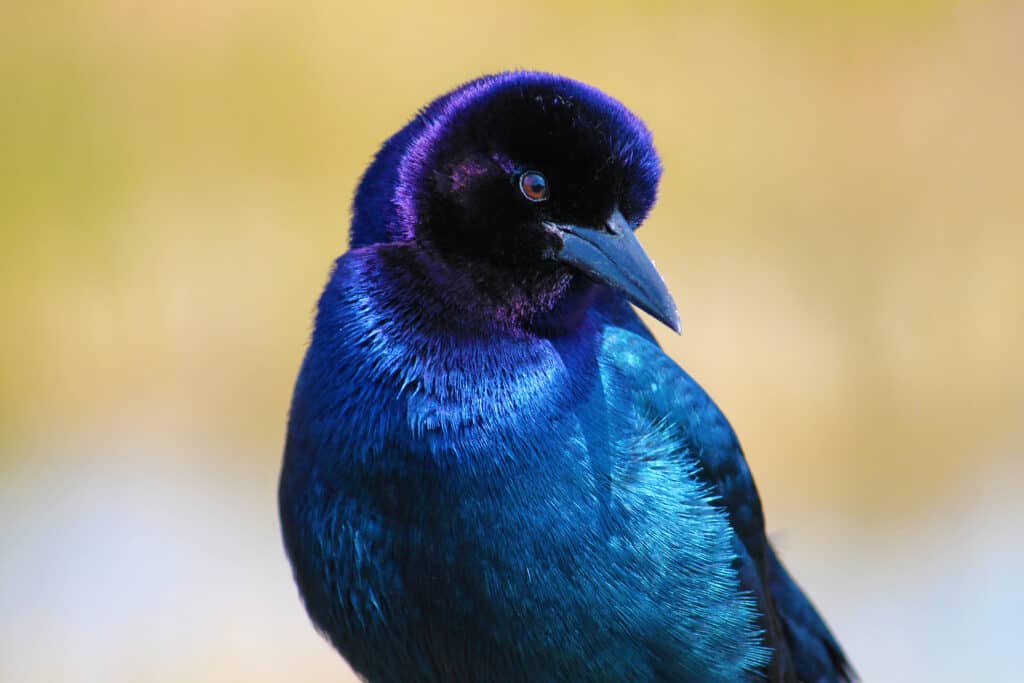
©iStock.com/KennShapiro
Habitat: Purple martins breed throughout Pennsylvania and the rest of the eastern United States. You can find them in towns, farms, mountain forests, and any semi-open areas near water.
Appearance: They are very large swallows with broad chests, hooked bills, and forked tails. They are dark iridescent bluish-purple with brownish-black tails and wings.
Diet: Flying insects, true bugs, and spiders
Calls: Gurgling warbles and “chew” calls
Backyard Tip: Provide crushed eggshells for grit
Tree Swallow
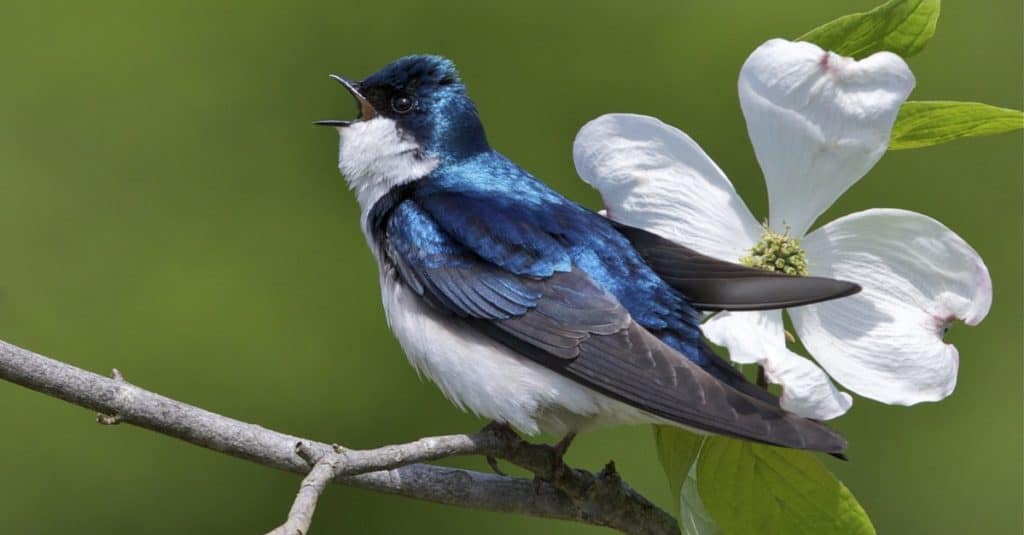
©Tom Reichner/Shutterstock.com
Habitat: Another Pennsylvania breeder, the tree swallow lives in open country near water, such as lakes, marshes, and meadows.
Appearance: They have streamlined bodies with pointed wings and notched tails. Adult males are bluish-green above and white below with dark brown wings and tails.
Diet: Insects, berries, and seeds
Calls: Cheerful twitters
Backyard Tip: Plant berry bushes and provide eggshells
Cerulean Warbler
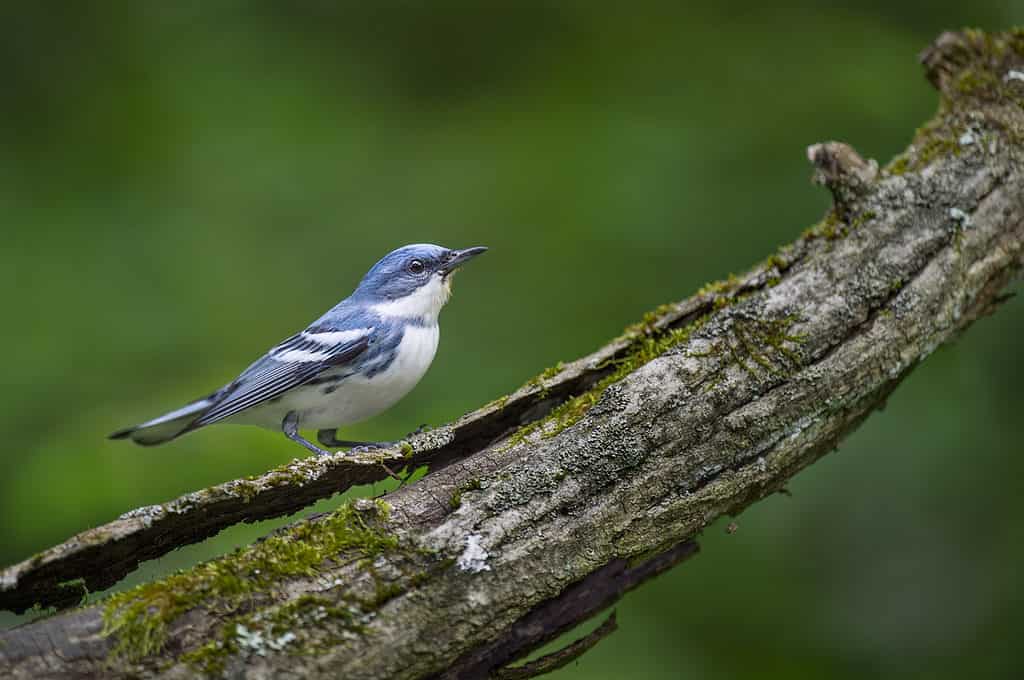
©iStock.com/ps50ace
Habitat: Cerulean warblers live in river valleys in deciduous forests, and they breed in mature hardwoods along streams. You can occasionally find this species during spring and summer in Pennsylvania.
Appearance: A small, compact bird, the cerulean warbler has round bills and short tails. Males are cerulean blue above and white below with white wingbars and dark streaking.
Diet: Primarily insects
Calls: Short buzzy notes
Backyard Tip: This species is not common in backyards.
White-breasted Nuthatch
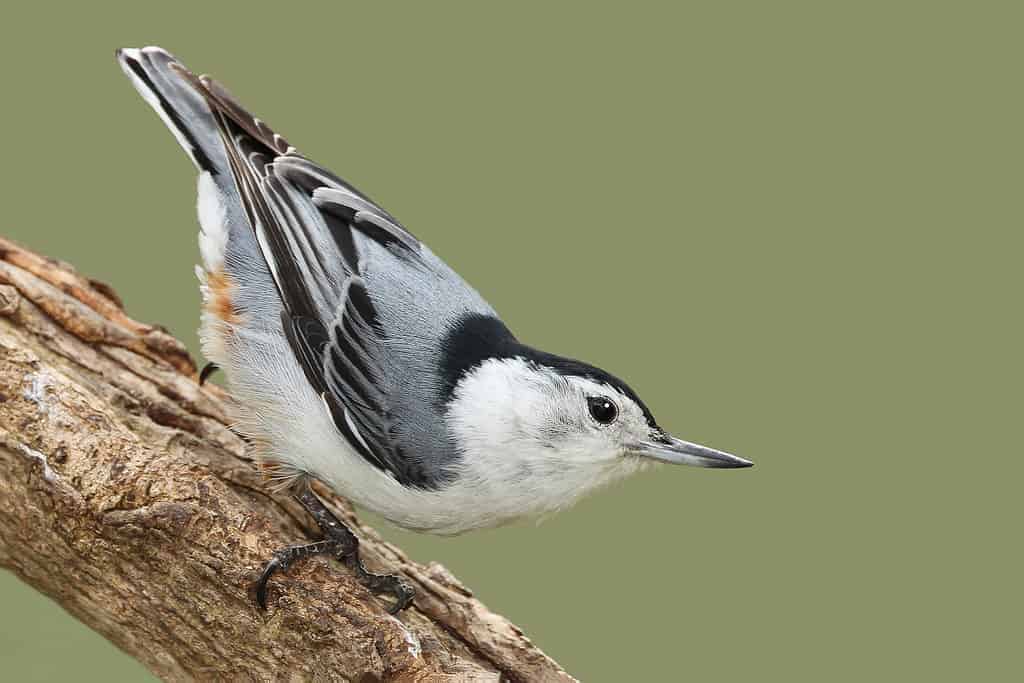
©Brian Lasenby/Shutterstock.com
Habitat: The white-breasted nuthatch is a permanent resident throughout most of the United States, including Pennsylvania. You can find them in woodlots, forests, and groves.
Appearance: This large nuthatch has a round head, a short tail, and a long bill. They have grayish-blue backs, white faces and underparts, and black caps.
Diet: Insects and seeds
Calls: Low whistles and nasal “yank-yank”
Backyard Tip: Provide a nest box and place sunflower seeds, suet, and peanuts in a feeder
Red-breasted Nuthatch
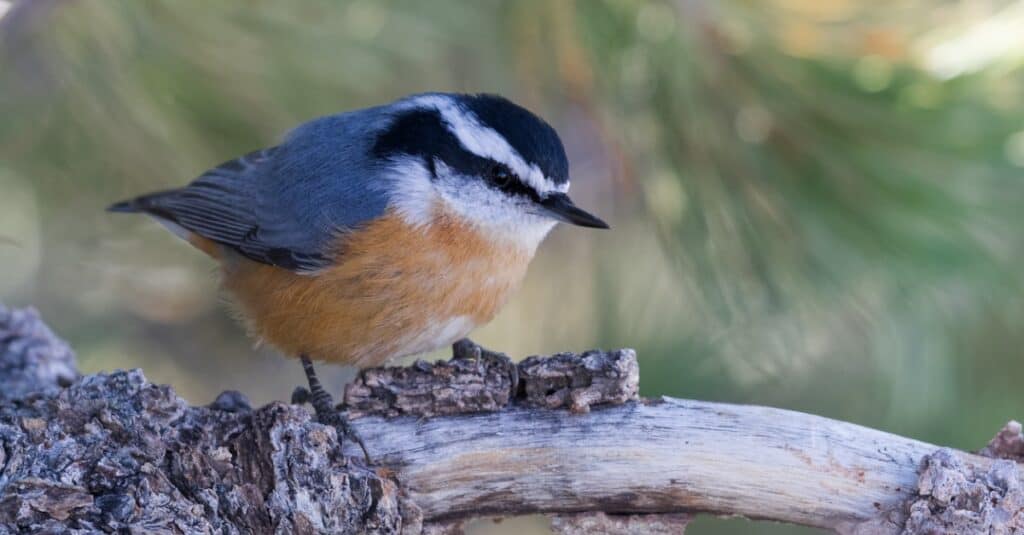
©iStock.com/M. Leonard Photography
Habitat: The red-breasted nuthatch lives year-round in the central portions of Pennsylvania and winters in the far east and west. Look for them in mature coniferous forests and other wooded habitats.
Appearance: These birds are small and compact, with pointed bills, short tails, and barrel chests. They are bluish-gray above, rusty brown below, and feature black and white heads.
Diet: Insects and seeds
Calls: Rapid calls and tinny “yank-yank”
Backyard Tip: Put up a nest box to attract breeding pairs
Great Blue Heron

©Brian Lasenby/Shutterstock.com
Habitat: The great blue heron lives permanently in the far eastern areas of Pennsylvania. But breeding populations inhabit the rest of the state during spring and summer. You can find them in marshes, shores, swamps, and tidal flats.
Appearance: It is the largest North American heron, featuring long legs, long, curved necks, and thick bills. They have bluish-gray plumage with yellow beaks and black stripes across their eyes.
Diet: Fish, frogs, turtles, snakes, rodents, and birds
Calls: Harsh squawks
Backyard Tip: These birds don’t typically visit backyards unless you have a pond.
Common Grackle
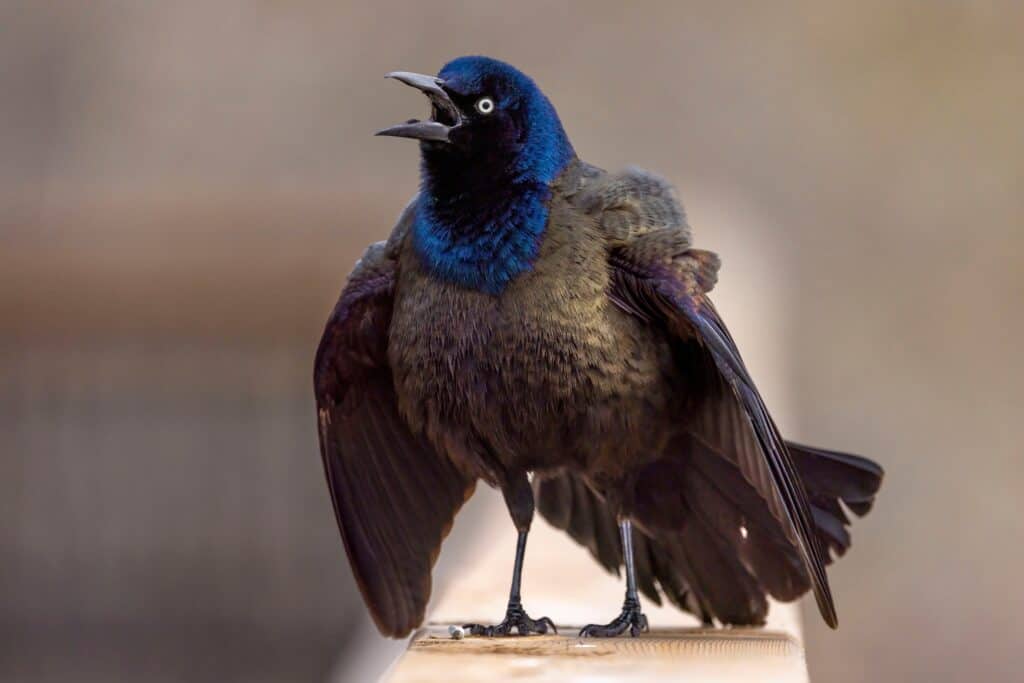
©Kendall Collett/Shutterstock.com
Habitat: They live year-round throughout most of the state, except for small breeding populations in the interior. You can find them in farmlands, towns, streamsides, and other common areas.
Appearance: The common grackle is a large, lanky bird featuring iridescent bronze bodies and bluish-purple heads.
Diet: Insects, spiders, frogs, lizards, eggs, and small rodents
Calls: Clucks and high-pitched screeches
Backyard Tip: Spread mixed grains and seeds on the ground
Up Next:
- Animals in Pennsylvania
- 9 Types of Hawks in Pennsylvania
- Discover The 7 Largest Animals In Pennsylvania, and Where You’ll Find Them
The post All Types Of Blue Birds in Pennsylvania appeared first on AZ Animals.
from Animal News, Facts, Rankings, and More! - AZ Animals https://ift.tt/pMJ4F3o